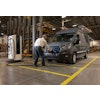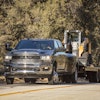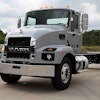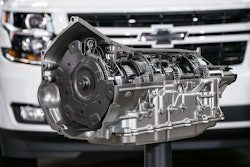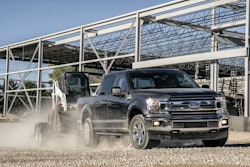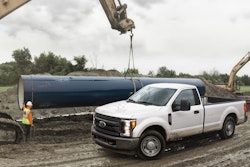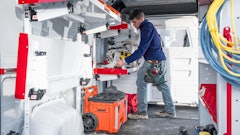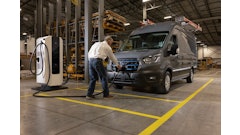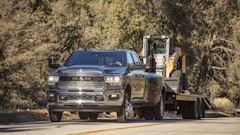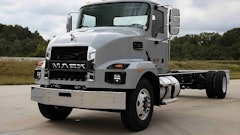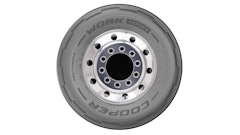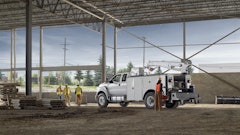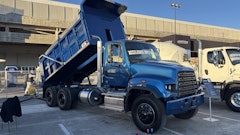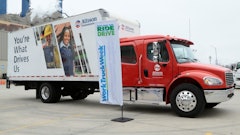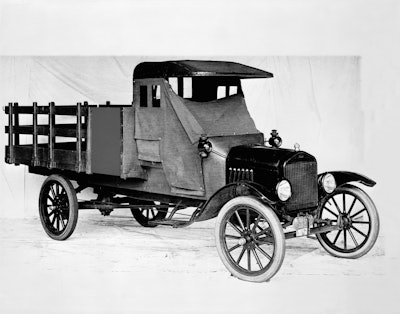
One hundred years ago on July 27th, Ford introduced its first purpose-built truck, the 1917 Ford Model TT, forever changing the auto industry. Nine years after the first Model T saw Ford customers asking for a vehicle that could haul heavier loads and provide greater utility for work and deliveries.
On July 27, 1917, Ford responded with the Model TT, which retained the Model T cab and engine. The Model TT came with a heavier-duty frame capable of carrying one ton of payload. The factory price was $600; 209 were sold that year.By 1928, Ford had sold 1.3 million Model TTs before replacing the truck with the more capable Model AA with a 1.5-ton chassis.
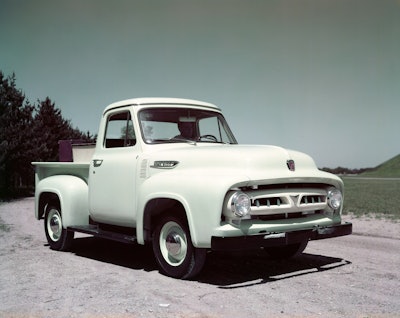 1953 Ford F-100 pickup truck
1953 Ford F-100 pickup truck
By 1941, Ford had sold more than 4 million trucks. Changing over to war production resulted in the loss of consumer sales but a gain in experience building heavy-duty military truck chassis and four-wheel-drive personnel carriers. A year after consumer production resumed in 1947, Ford leveraged that knowledge to provide even more innovations for its customers.
The first-generation F-Series covered Classes 2 through 7 capacities – from the half-ton F-1 to the much larger F-8 cab-over truck. With the arrival of the second-generation F-Series for 1953, Ford increased engine power and capacity, and rebranded the series. The F-1 became the F-100, while F-2 and F-3 trucks were integrated into the new F-250 line. F-4 became F-350. Class 8 trucks were spun off into a new C-Series commercial truck unit that produced iconic C-, H-, L-, N-, T- and W-Series Ford trucks.
Throughout this period, Ford trucks started looking less utilitarian, sporting two-tone paint, automatic transmissions, and improved heater and radio offerings. New standard features debuted with the 1953 F-100, including armrests, dome lights and sun visors. Lower and with a wider cab, the new truck featured integrated front fenders and a more aerodynamic design.
Then, in 1957, Ford tested out a car-based truck – the Falcon Ranchero. Marketed as “More Than a Car! More Than a Truck!,” this light-duty truck brought car-like amenities to consumers.
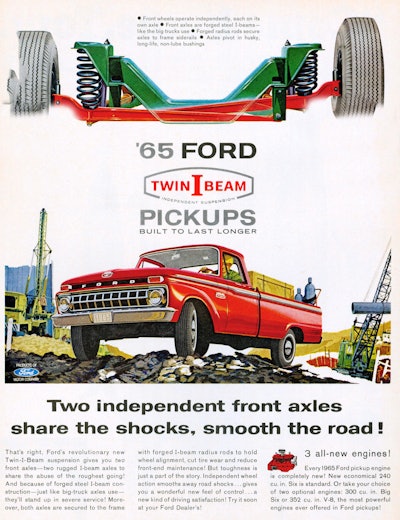 1965 Ford Twin I-Beam Advertisement
1965 Ford Twin I-Beam Advertisement
With the arrival of the sixth-generation F-Series in 1975, Ford dropped the popular F-100, replacing it with a higher-capacity F-150 pickup to combat the C/K trucks from General Motors.
Premium edition trucks, such as the Lariat package introduced in 1978, offered more comfort features including air conditioning, leather trim, and power windows and locks. In 1982, Ford charted a different course with an all-new compact truck – Ranger. Now, after a seven-year hiatus, Ford is reintroducing an all-new Ranger in North America in 2019.
In 1998 Ford introduced the F-Series Super Duty. Engineered for fleet and heavy-duty work use, Super Duty – from the F-250 all the way up to the F-750 – more clearly defined Ford trucks for a growing base of commercial applications.

